If you live in continental Europe or the UK the natural gas that heats your home this October is costing at least five times more than it did a year ago. The reasons are varied: among them are earthquakes in the Netherlands, China's attempt to clean up its air and Russian president Vladimir Putin's power politics.
But the impact is clear. The record prices being paid by suppliers in Europe and shortfalls in gas supply across the continent have stoked fears of an energy crisis should the weather be even marginally colder than normal. Households are already facing steeper bills while some energy intensive industries have started to slow production, denting the optimism around the post-pandemic economic recovery.
And while some in the gas industry believe the price surge is a temporary phenomenon, caused by economic dislocations owing to coronavirus, many others say it highlights a structural weakness in a continent that has become too reliant on imported gas.
“Europe principally has two options for additional gas supplies as it is so heavily reliant on imports: Russia or cargoes of liquefied natural gas,” says Tom Marzec-Manser at ICIS, a consultancy. “Neither of those sources have worked as Europe might hope during this crisis.”
The transition to cleaner energy such as wind and solar has had the effect of pushing up demand for gas — often viewed by the industry as a medium-term “bridging fuel” between the eras of hydrocarbons and renewables. But the long-term target of creating net zero economies in the UK and Europe has also sapped investors' willingness to put money into developing supplies of a fossil fuel they believe could be largely obsolete in 30 years. Meanwhile, Europe's domestic gas supplies, run low by decades of rapid development, have declined by 30 per cent in the past decade.
Europe's attempts to be a global leader on climate change have arguably fed into the wider changes in the market. They have pushed the fast-growing economies of Asia to move away from coal, only to find that countries such as China and India are now rivals for the same supplies of LNG that Europe has come to rely on from countries such as the US and Qatar.
The gas industry used to operate almost entirely on point-to-point pipelines that kept regional competition to a minimum. The rapid growth of the LNG industry means seaborne cargoes have now created something more akin to a global market similar to oil.
“Every year China connects up to 15m homes in its coastal cities to the gas grid — that's like adding a Netherlands and a Belgium worth of demand every year,” says
Henning Gloystein at Eurasia Group, a consultancy. “So when it gets cold in China the gas price goes up in the UK and Germany.”
European governments argue that “volatile” gas prices reinforce the need to accelerate towards renewable energy. But there are concerns that the problems could trigger a backlash against renewables if consumers start to believe the price of the energy transition is too high.
“Some people are trying to portray this as the first crisis of the energy transition,” says Fatih Birol, head of the International Energy Agency, which advises governments and is largely funded by OECD nations. “They would be wrong, but if this is the dominant voice coming from this situation it may become a barrier to the policies we need to enact to make the energy transition work.”
'Swing supplies' start to dry up
The world's oil consumption remains relatively stable throughout the year with only small fluctuations between the seasons. Gas demand, however, is far stronger each winter owing to its role in domestic heating.
While there is a baseload of gas demand all year from electricity generation and industry, such as fertiliser and steel producers, the winter peaks can be far higher across the northern hemisphere. About 40 per cent of total gas consumption in the UK goes directly to heating homes, largely condensed into a period of five-six months.
The industry manages these cycles in various ways. The chief one is storage — pumping gas underground during the low-demand summer months that can then be called on when the weather turns cold. The other is access to swing supplies that can rise or reduce as needed. One of the big problems the UK and Europe faces, however, is that the main sources of these supplies are not working as they once did, creating the conditions for more volatile gas prices.
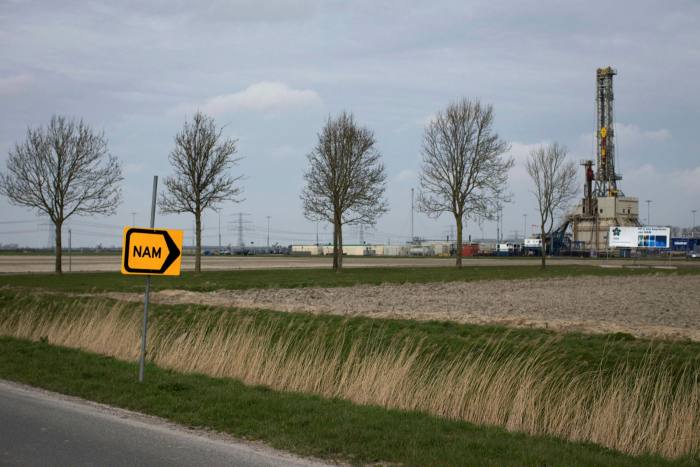 Groningen, in the Netherlands, is Europe's largest gasfield, but it has seen its huge supplies slowly depleted © Jasper Juinen/Bloomberg
Groningen, in the Netherlands, is Europe's largest gasfield, but it has seen its huge supplies slowly depleted © Jasper Juinen/Bloomberg
Europe's largest gasfield, Groningen, in the Netherlands, was designed to be a significant swing supplier, with production boosted or suppressed to help balance supply with demand, allowing other gasfields to produce freely all year round. But Groningen has become a liability for the Dutch government. As its huge supplies slowly depleted, small earthquakes were triggered in the surrounding area, causing damage to homes and businesses.
As political pressure mounted, the decision was taken to begin shutting it down, with the field now pumping three quarters less than in 2018. “It takes away one source of flexibility,” says Laurent Ruseckas, Emea executive director of gas and renewables at IHS Markit.
The UK faces similar issues. It has much lower storage capacity than most countries in Europe — a legacy of being energy independent in the heyday of North Sea supplies — a position that has been worsened by the shutdown of the Rough storage facility, off the east coast of England, three years ago. That decision cut the UK's storage capacity from 15 days of winter demand to at most five.
The good news for Europe is that it has more LNG import capacity than any other region. The UK imported almost 20 per cent of its gas in 2019 through LNG shipments, alongside pipeline flows from Norway and the EU to offset declines in domestic production. The bad news, however, is that, Asian gas demand has grown so rapidly — expanding by 50 per cent over the past decade, led by a tripling in consumption in China — that LNG cargoes have become much harder to secure in 2021. What was supposed to be a reliable source of flexible supplies suddenly appears a lot less so.
For instance, the UK government no longer names Qatar, one of the two largest LNG exporters, as a main supplier. The majority of Qatar's cargoes sail east, where buyers have been paying a premium to attract shipments.
“LNG will remain tight,” says James Huckstepp, Emea gas analyst at S&P Global Platts. “So it will come down to industry cutting demand to balance the market if it's a cold winter.”
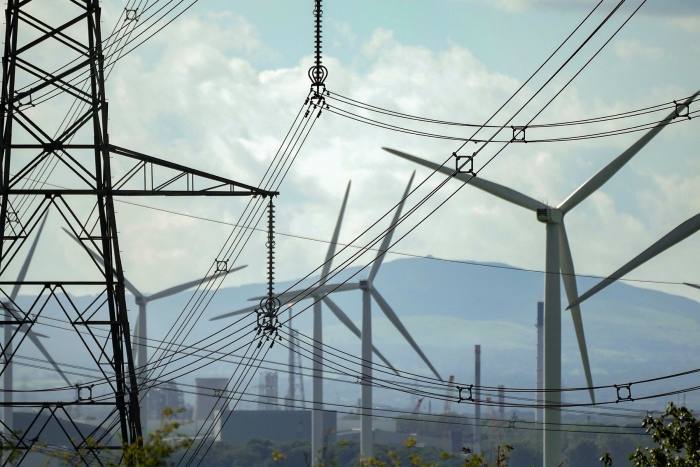 Whether renewable developments will have the same capacity to stabilise global energy prices if gas supplies remain tight remains untested © Christopher Furlong/Getty Images
Whether renewable developments will have the same capacity to stabilise global energy prices if gas supplies remain tight remains untested © Christopher Furlong/Getty Images
Industry plays Russian roulette
Arguably the most important factor in all of this is Russia. Continental Europe gets more than a third of its total gas supplies from Gazprom, Russia's state-backed monopoly pipeline supplier. It is a relationship that has developed over decades, but has more recently been poisoned by the fallout from Moscow's 2014 annexation of Crimea from Ukraine.
The EU is often characterised by critics as vulnerable to its reliance on Russian gas supplies. But the relationship is more complex. The EU initially pushed for a Russian shift away from long-term contracts linked to oil prices, a move that indirectly created a pricing system more reflective of gas market dynamics.
However, Gazprom's reliability has been called into question this year. A long 2020-21 winter meant storage facilities in both Russia and continental Europe have been drained to low levels. And Gazprom has done little to help Europe refill, declining to ship additional supplies via Ukraine beyond what had been secured under long-term contracts.
Ukraine and other countries in eastern Europe have accused Russia of trying to “weaponise” gas supplies, partly to pressure Berlin to accelerate the approval of the politically controversial Nord Stream 2 pipeline, which will bypass Ukraine to deliver supplies direct to Germany through the Baltic Sea.
In September, Putin derided “smart Alecs” in the European Commission for pushing for market-based pricing, suggesting they were at fault for the surge in prices now threatening European economies. “The Russian view is the EU asked for this world,” says one senior western trading executive. “Now they're welcome to enjoy it.”
The gas industry is fiercely divided over whether Russia is playing games with supplies. In one camp analysts argue that Moscow has had to prioritise filling its own storage facilities and that domestic consumption has risen in recent years, leaving it with less gas to export.
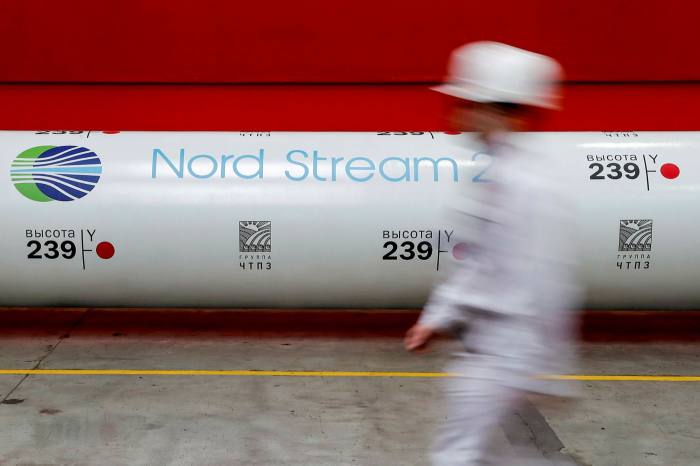 The logo of the Nord Stream 2 gas pipeline project is seen on a pipe at the Chelyabinsk pipe rolling plant in Chelyabinsk, Russia © Maxim Shemetov/REUTERS
The logo of the Nord Stream 2 gas pipeline project is seen on a pipe at the Chelyabinsk pipe rolling plant in Chelyabinsk, Russia © Maxim Shemetov/REUTERS
Others suspect that while there are elements of truth in Russia facing challenges in boosting supplies to Europe, there has also been a degree of opportunism on Gazprom's part — both to raise the gas price and to further Moscow's political ambitions. They believe these stretch from sealing approval for NS2 to reminding Europe not to neglect fossil fuel producers in its rush to decarbonise. The IEA said last week it believed Russia could send roughly 15 per cent more gas to Europe this year.
“Either Russia is playing games because of NS2 or they don't have enough gas,” says Eurasia Group's Gloystein. “[Either way] you can't rely on them.”
It means Europe's three main sources of swing supplies have become a lot more precarious all at the same time.
Marzec-Manser at ICIS says that while LNG supplies should increase in the coming years as more projects come on stream, consumers need to brace for a period of higher energy costs. “At least until the summer of 2023 we should assume wholesale prices are not going to fall back to the levels of the pre-Covid years,” he adds.
Europe may face even more long-term competition for gas supplies. Russia started supplying China with gas through the Power of Siberia pipeline two years ago, but it is fed by fields that have never been used to supply Europe. Gazprom is now studying construction of Power of Siberia 2, a pipeline that would connect the fields in western Siberia — which do supply Europe — to China by 2030.
Ruseckas at IHS Markit says this would give Russia the option of “where to send the gas on a month-to-month basis”, potentially creating more uncertainty around supplies to Europe.
“Put yourself in Russia's shoes,” adds Ruseckas, “I think they valued this role of being Europe's main supplier and thought they should be respected. But if Europe is to decarbonise, 'why should we keep being Mr Nice Guy?'”
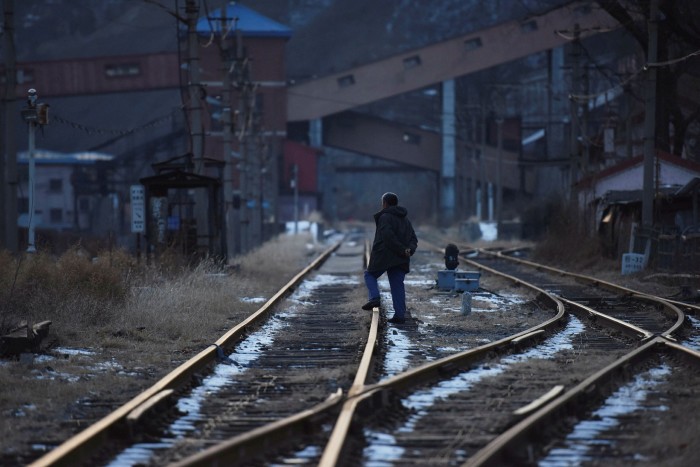 The Datai coal mine in Mentougou, west of Beijing. As China has moved away from coal, it has joined the competition for the same supplies of LNG as Europe © Greg Baker/AFP via Getty Images
The Datai coal mine in Mentougou, west of Beijing. As China has moved away from coal, it has joined the competition for the same supplies of LNG as Europe © Greg Baker/AFP via Getty Images
Investor confidence
Despite the short-term boost to cash flows and share prices, the wider gas industry has not uniformly welcomed record prices. “This is not 'good for gas' that prices are so high,” says Paddy Blewer at the International Gas Union, an industry body.
The industry concern is that although it still hopes to act as a bridge fuel during the energy transition, recent price rises have left it besieged on all sides. Gas executives point to the US, where the shale industry has sharply reduced coal consumption, leading to a steep drop in emissions, and record carbon prices in the UK and Europe, which have the potential to do the same.
The gas industry has been criticised for being disingenuous. While it produces about half the CO2 of coal when burnt, methane emissions — an even more potent greenhouse gas — are released during extraction and transportation and have come under growing scrutiny. French power company Engie backed out of a US LNG deal this year, reportedly under pressure from the French government over methane concerns. “Energy needs to be affordable, reliable and clean and the gas industry is struggling on all three fronts right now,” Gloystein says. The hope is that if the industry tackles methane emissions, as many companies have pledged to, it can still play a role. But the International Gas Union wants governments to think harder about policies — from drilling restrictions in the US to licensing delays in the UK — they believe have damaged the industry's ability to keep the world well supplied.
“Governments have attacked the supply side while executing policies that actually boost demand for gas, like higher carbon prices,” Blewer says. “We want to cut emissions but electrification hasn't moved fast enough to say we don't need hydrocarbons any more, so the role gas can play should be recognised.
“But gas developments take many years and billions of dollars so require investors to feel confident they will get repaid,” adds Blewer.
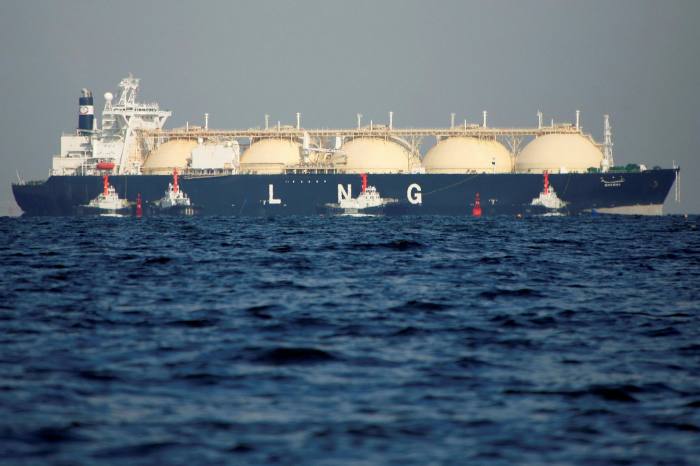 A liquefied natural gas tanker is tugged towards a thermal power station in Futtsu, east of Tokyo, Japan © Issei Kato/Reuters
A liquefied natural gas tanker is tugged towards a thermal power station in Futtsu, east of Tokyo, Japan © Issei Kato/Reuters
For now, policymakers are largely left hoping that Russia follows through on hints that it could increase gas supplies this winter, or that the weather will be mild.
In the longer term, cutting demand and finding alternatives is critical. Some analysts have drawn comparisons with the 1970s Arab oil embargoes. They spiked prices but triggered an energy efficiency drive and the development of resources in regions like the North Sea and Alaska, ushering in almost two decades of relatively cheap oil.
Whether renewable developments will have the same capacity to stabilise global energy prices if gas supplies stay tight remains untested.
Birol has urged governments to stay the course and to use this moment to solidify plans to decarbonise quickly, even if they need to find ways to cushion voters from the full extent of the gas price rise this year.
“I cannot predict how long or how harsh this winter will be,” the IEA chief says. “But I do know that after winter, spring will come and clean energy transitions will continue.”
Financial Times

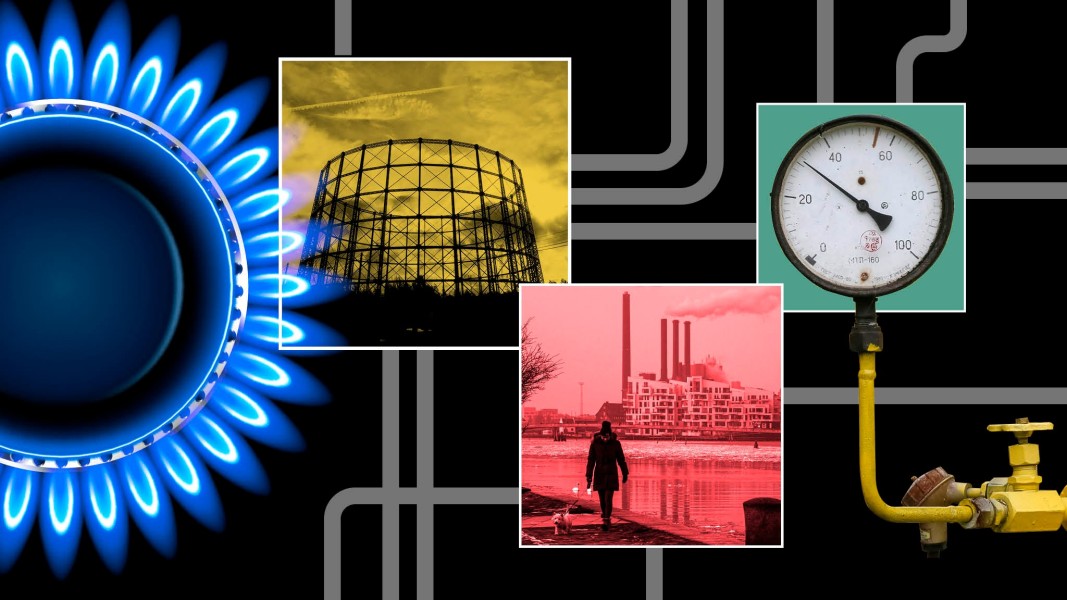
 Groningen, in the Netherlands, is Europe's largest gasfield, but it has seen its huge supplies slowly depleted © Jasper Juinen/Bloomberg
Groningen, in the Netherlands, is Europe's largest gasfield, but it has seen its huge supplies slowly depleted © Jasper Juinen/Bloomberg Whether renewable developments will have the same capacity to stabilise global energy prices if gas supplies remain tight remains untested © Christopher Furlong/Getty Images
Whether renewable developments will have the same capacity to stabilise global energy prices if gas supplies remain tight remains untested © Christopher Furlong/Getty Images The logo of the Nord Stream 2 gas pipeline project is seen on a pipe at the Chelyabinsk pipe rolling plant in Chelyabinsk, Russia © Maxim Shemetov/REUTERS
The logo of the Nord Stream 2 gas pipeline project is seen on a pipe at the Chelyabinsk pipe rolling plant in Chelyabinsk, Russia © Maxim Shemetov/REUTERS The Datai coal mine in Mentougou, west of Beijing. As China has moved away from coal, it has joined the competition for the same supplies of LNG as Europe © Greg Baker/AFP via Getty Images
The Datai coal mine in Mentougou, west of Beijing. As China has moved away from coal, it has joined the competition for the same supplies of LNG as Europe © Greg Baker/AFP via Getty Images A liquefied natural gas tanker is tugged towards a thermal power station in Futtsu, east of Tokyo, Japan © Issei Kato/Reuters
A liquefied natural gas tanker is tugged towards a thermal power station in Futtsu, east of Tokyo, Japan © Issei Kato/Reuters